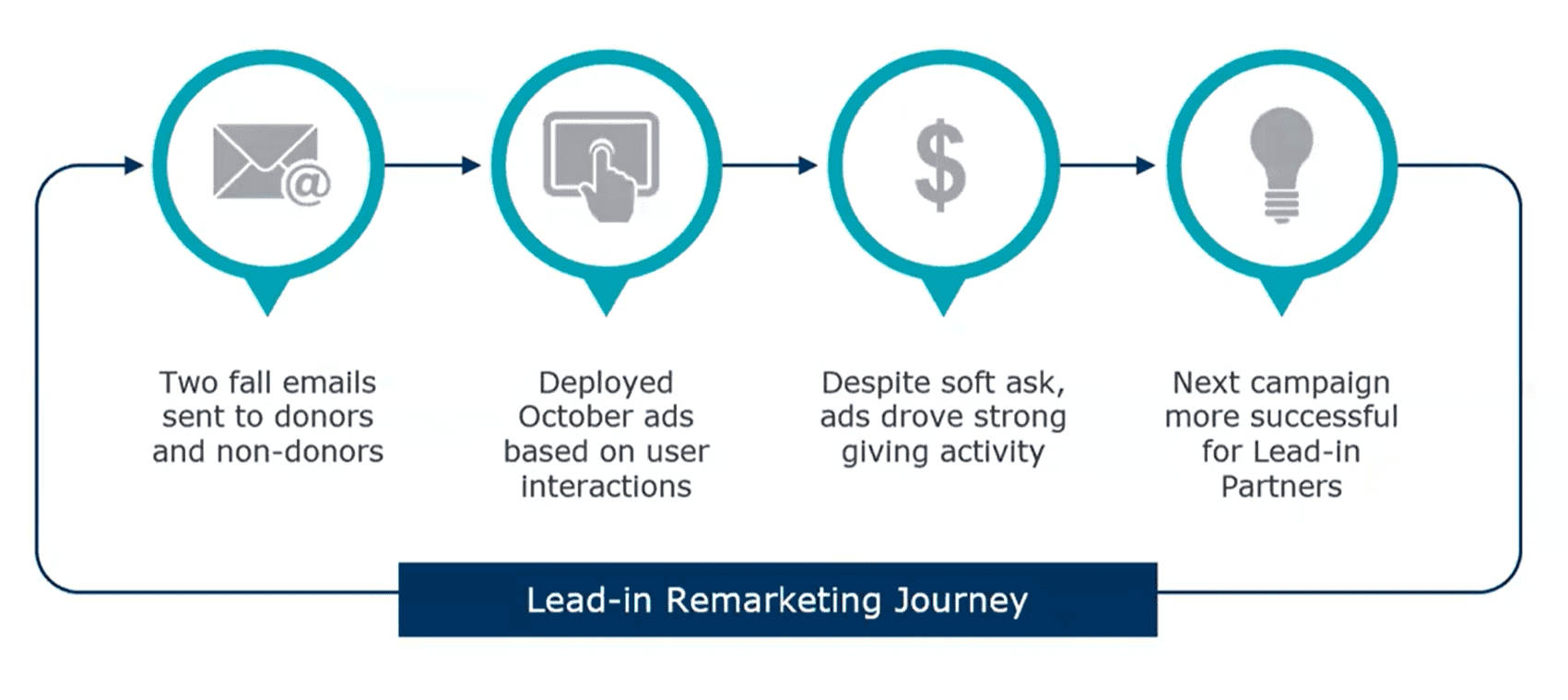How to stay ready for donors who “aren’t ready yet”
3 ways digital marketing can help you nurture prospective donors
February 20, 2023
At times, asking donors for contributions can feel a lot like standing outside a storefront, spinning a sign that says, “please?”
Some days you’ll find just the right donor for a gift. Those are encouraging days for all of us. But what about when they tell you they just “aren’t ready yet,” then what? Do you feel like you have to keep standing there, spinning the proverbial sign?
Thankfully, digital channels provide options to help you stay in front of that audience, develop their interest, and focus your attention on those who are ready. Through hundreds of field marketing tests each year, our advancement marketing team has a catalog of tried-and-true digital marketing approaches that help our partners reach their goals.
If you’re looking to reach donors who are “not ready” yet, try these strategies.
1. Grow your donor database
You can’t reach potential donors if you don’t have their correct contact information. Are you spending a ton of time cleaning up your donor database? This data changes constantly, and if some of your leads have gone cold, it may be because you aren’t contacting them at the right email address.
According to a 2021 Statista survey, the average person has two email accounts, and one in four people use up to four email accounts. Additionally, an EAB study found that most universities have incorrect or incomplete emails for over half of their alumni. While correcting your lists may be your preferred strategy, it takes a lot of resources to continuously refresh your list. A more time-effective option may be to use filtered ad lists to find your audience by demographic on the platforms they use the most, like Facebook or LinkedIn. Once you reach these contacts where they are, you can de-duplicate who’s in your database, ensuring your tailored messages are actually being received.
2. Use ecommerce tactics to reengage donors
Your audience is already online, which means that they’re quite familiar with the strategies retail companies use to engage them. As with retail, your customers have their own mental “shopping carts” where they hold items to consider purchasing. Being in someone’s cart is a good sign that they’ll follow through with the commitment, but it isn’t guaranteed.
E-commerce companies use email to send cart reminders to people who haven’t completed a purchase, and you can use a similar approach in your own digital marketing. You can use phrases like “still thinking about it?” and “don’t forget about your donation” along with more details on the impact their support will make to encourage follow-through.
Another common digital strategy is retargeting (also called remarketing), which involves reaching out to alumni who showed interest in the past but didn’t end up making a gift. By creating campaigns for this group that nurture their interest over time, you can remind them of the outcomes their giving could support. These efforts build engagement and increase conversion to gifts—when the donor is ready.
For example, our team uses the following lead-in remarketing strategy with Advancement Marketing Services partners to encourage action among both donors and non-donors. We use successful subject lines from our cross-partner email tests to drive opens and clicks. From those interactions, we use that same contact list to segment by engagement type, which helps us assess interest. Finally, we create ad content directed toward each of these segments, and the language used for each ad set is informed by each audience’s level of interest.

3. Improve your targeted strategy with digital engagement data
One shortfall of traditional marketing campaigns is that you likely start and end with the same donor list. In doing this, you’re not only missing out on contacts who aren’t on your list, but also losing budget to potential customers with behaviors that don’t indicate interest. Digital ads can track audience behaviors, like views, clicks, and time spent watching video ads. Aggregated data related to these behaviors can help you predict interest and serve your ads up to people who have high affinity for your organization. Your investment will go further with platforms that allow you to update and refresh your campaign strategy when needed.
Overall, digital marketing allows for more agility than any other channel effort. Direct mail requires project management to ensure copywriters, designers, and printers can deploy mail before giving deadlines, not to mention reliance on advancement services to pull segmented lists. Digital marketing allows your team to identify a challenge, pull a tailored list of alumni to contact, and then deliver a digital experience with a personalized call to action.
THINGS HAVE CHANGED—HAS YOUR ANNUAL GIVING STRATEGY?
So, put the spinning signs away and rest assured that you don’t have to expend all of your energy on indecisive donors. With a comprehensive digital marketing strategy, you can overcome donor indecision without draining your resources.
More Blogs

Why you can’t afford to cut back on annual giving

8 key trends shaping advancement in 2025
